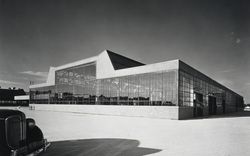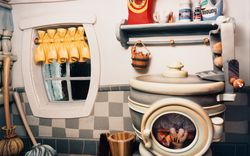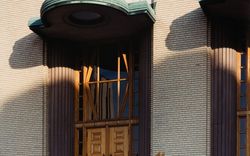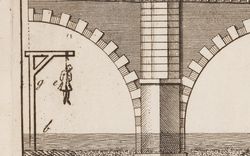Empire
Photographs by John Gossage
They say that Gary, Indiana, is the most dangerous city in America. That doesn’t stop Washington…from being by far the most unpopular. You can stay out of Gary or not according to your preference, but Washington and the idea of Washington gets to you wherever you are. To be truthful, if I remember correctly, when my pictures were taken Washington, DC, was actually the murder capital as well, but the city seems to have lost its taste for killing in recent years and let Gary slip by it. Leaving us once again to be just the city of taxes, impeachment, and the disingenuous smile. What seemed to be my access to the city was the “good press for the dead” part of the city. The places that the government uses to preserve its past and, by implication lay claim to its current power.
— John Gossage, 1999
We partially acquired John Gossage’s Empire series in 1999. The following year, Gossage donated another twenty-three photographs to the set. The series was completed by a donation by Lewis Baltz of five additional photographs. Empire appears in full above. The series was also displayed in our 2005 exhibition of the same name, juxtaposed with a set of prints taken in 1868 by Hermann Vogel. Loaned by Gossage, the Vogel photographs were a commission by the Prussian government to record the sites of ancient Egypt.




















































